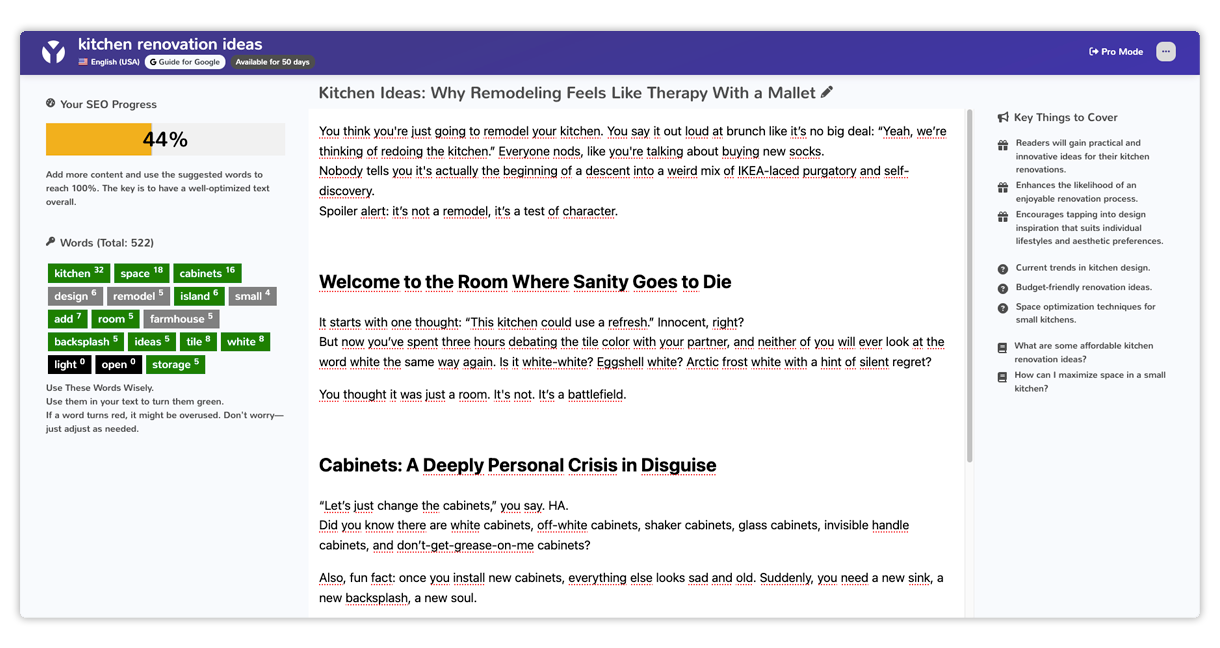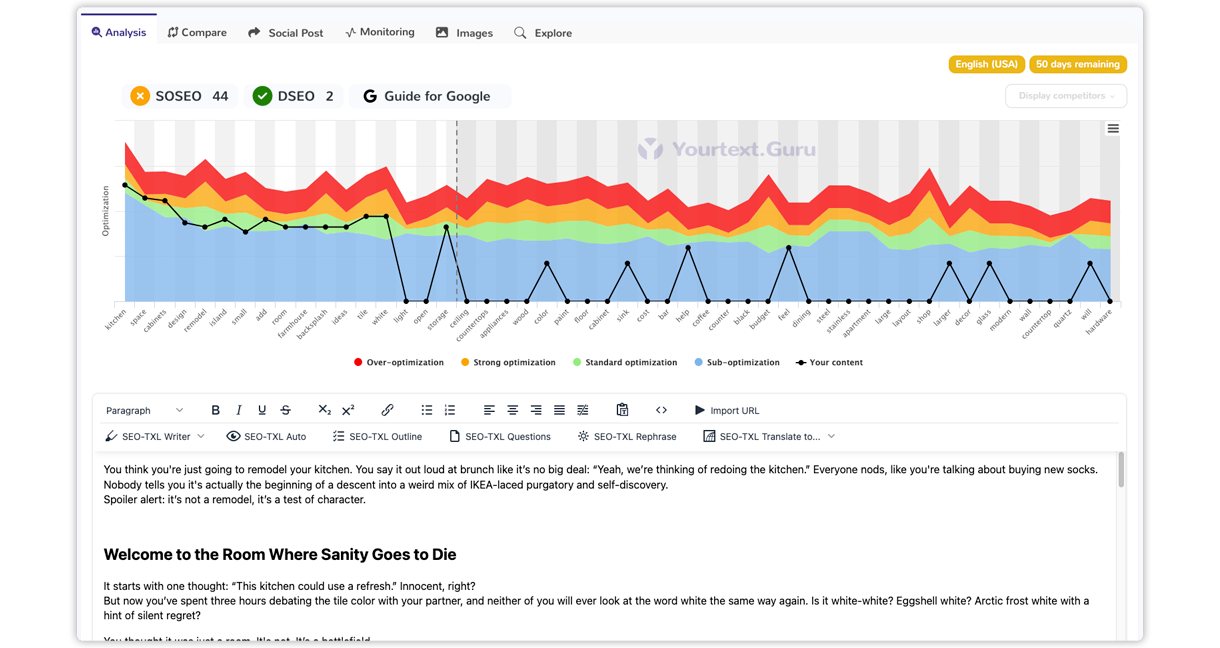Semantic Optimization Serving Your SEO
How yourtext.guru Reinvents Semantic SEO Optimization
SEO is more than just stuffing keywords into your content. That’s where yourtext.guru shines—going beyond traditional semantic optimization by deeply analyzing the SERPs to generate SEO guides that truly deliver. Our method incorporates advanced search engine algorithms and ranking principles to help you rank higher with confidence.
How Our Guides Are Created
The journey starts when you create a guide on yourtext.guru. We analyze the SERPs for your chosen query and crawl selected pages to study their content—not to store it, but to extract statistical insights. Combined with our unique algorithm, we identify key terms not just by frequency but by contextual relevance and differential corpus analysis.
The Two Pillars of Our Algorithm
For the curious minds out there, our algorithm relies on two core principles. First, we build precise context vectors for each term. Second, we apply a differential corpus method to determine how important a word is on your page compared to its general usage across the web. This allows us to pinpoint terms that are crucial to your query—especially those that appear frequently in top-ranking pages but rarely elsewhere.
Guides Designed to Propel You to SEO Success
By leveraging these insights, yourtext.guru produces rich, data-driven SEO guides. These don’t just tell you what to do—they guide your SEO strategy through competitive SERPs, ensuring each move you make is both informed and aligned for success.
We Also Offer a Chill Mode
A more accessible mode: optimize without the headache.

Frequently Asked Questions
What are SOSEO and DSEO scores in yourtext.guru? (Pro Mode)
SOSEO measures the overall optimization level of your text, on a scale from 0 to 300%. A score above 100% means very high optimization and might require review to ensure it's not overdone.
DSEO indicates potential risks from over-optimizing specific terms, ranging from 0 to 200%. The higher the score, the greater the likelihood that some terms are overused.
DSEO indicates potential risks from over-optimizing specific terms, ranging from 0 to 200%. The higher the score, the greater the likelihood that some terms are overused.
What are the ideal SOSEO and DSEO scores? (Pro Mode)
The right score depends on your competition. It's not about hitting max values, but staying strategically ahead. Ideally, you want a slightly higher score than your competitors—but not so much that you trigger Google’s Transition Rank filter.
Our system provides benchmark recommendations based on top 10 SERP analysis to help you aim for the sweet spot.
Our system provides benchmark recommendations based on top 10 SERP analysis to help you aim for the sweet spot.
Isn’t this all too complicated?
Managing two scores and a graph might feel overwhelming at first. That’s why we recommend starting with Chill Mode: as you write, a single progress bar fills up. Once you hit 100%, you're good to go for SEO.
It’s less precise than Pro Mode, but still quite effective!
It’s less precise than Pro Mode, but still quite effective!
How are optimization scores and zones displayed on the curve? (Pro Mode)
In yourtext.guru’s analyzer, a curve shows how optimized each term is. Colored zones highlight optimization levels—orange means highly optimized, while missing terms don’t appear at all. The farther left a word is, the more important it is for your query.
SOSEO and DSEO provide an overall summary of this graph—one for global optimization, the other for risk of overdoing it.
SOSEO and DSEO provide an overall summary of this graph—one for global optimization, the other for risk of overdoing it.
How to avoid over- or under-optimization?
Under-optimized texts often miss key terms and score low on DSEO. Over-optimized ones include everything—and too much of it. A great SEO text will highly optimize a few key terms (green/orange/red zones), under-optimize others (blue or green), and intentionally omit a few to stay natural.


 US
US FR
FR ES
ES